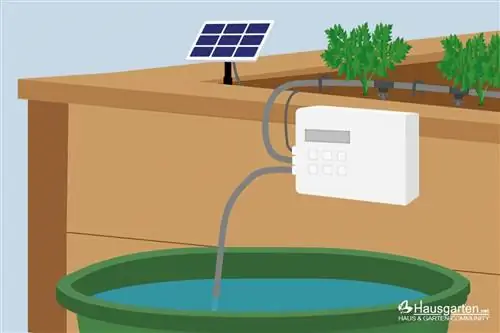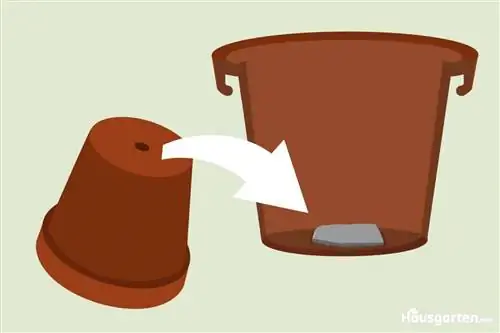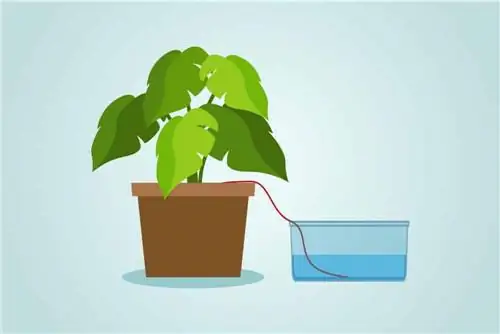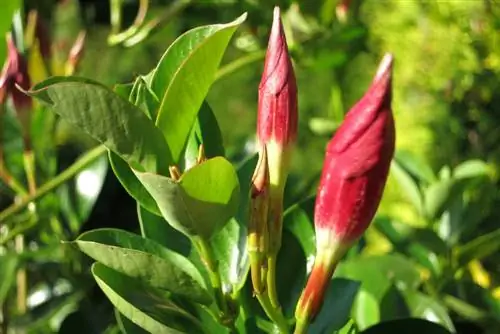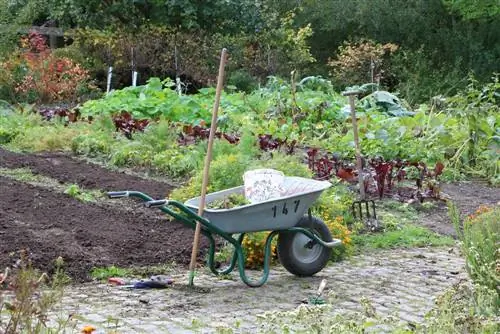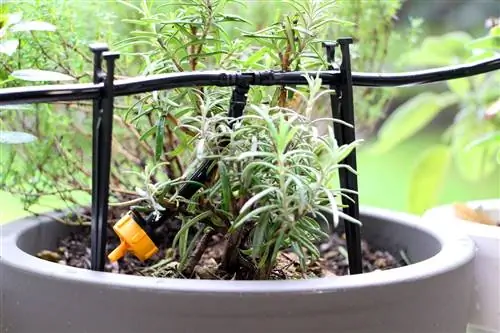- Author admin [email protected].
- Public 2023-12-17 03:39.
- Last modified 2025-01-24 12:45.
It is clear that plants need water to live. Whether casting is perceived as tedious work remains to be seen. Independence is promised by solar irrigation that automatically supplies your plants with water.
Solar garden irrigation
The main difference between a solar and a conventional irrigation system is that the electricity required is not generated from the socket, but rather with a solar panel. The sun, which is responsible for the thirst of the plants, also becomes a thirst quencher because the system is powered by its energy. This type of irrigation can therefore also be used where there is no electricity connection outside or within reach, such as in an allotment garden or in a holiday home. But these are not the only areas of application.
In principle, you can install this form of irrigation anywhere where water is needed, including on the balcony, terrace, in the greenhouse or in the garden for the raised bed. The prerequisite is that the sun's rays hit the solar module.
Water supply
In addition to the sun, solar-powered garden irrigation of course also needs water. Which water source you can use depends on the feed pump. While a submersible pump has to hang directly in the water, a pressure pump is located outside the reservoir and draws the water through a suction hose. The most important criteria for both solar pumps are:
- Bridging the delivery heights
- sufficient pumping power
- maximum flow rate
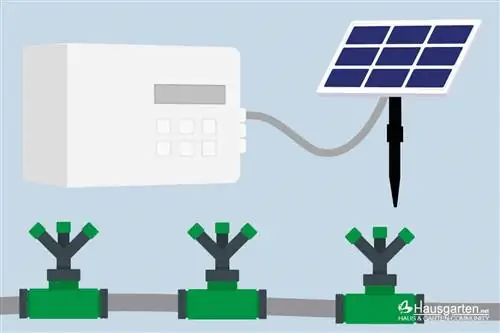
Automatic watering
The linchpin of this garden irrigation system is that it works automatically. This not only saves time for watering, but also provides your plants or lawn with water when you are away. The type of irrigation depends on the area of application. Basically, three forms of water distribution can be distinguished:
- Drip irrigation
- area irrigation
- fine spray mist
When your plants receive water depends on the system. There are irrigation systems that “water” automatically in the morning and evening. Intelligent systems go a step further by taking current weather into account. This means that the water is delivered at fixed times, but the irrigation system adapts the amount of water to the actual water requirement.
Solar irrigation sets
In order to enjoy automatic irrigation, complete sets are recommended, as they contain all the necessary components for basic equipment:
- Housing with irrigation computer, pump, battery and control panel
- Solar module with ground spike and cable
- Water level sensor incl. cable and plug
- Inlet hose with suction filter
- Supply hose
- T-connector
- Dispensing hose
- Connecting piece with check valve
- Hose caps
Depending on the type of irrigation, the equipment also includes:
- Drip irrigation: Water dripper with ground spike
- Sprinkler: Sprinkler with ground spike
- Spray mist: Mist nozzles with ground spike
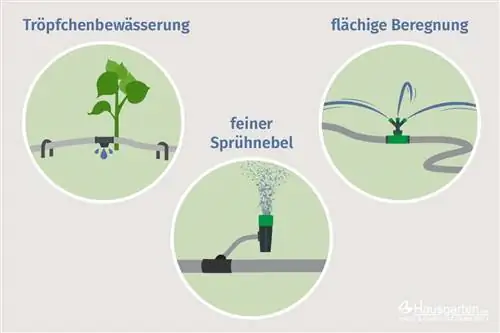
Since complete sets have fixed components as basic equipment, you should not be put off by the length of the hose and the number of water drippers, etc. Because most manufacturers offer expansion options. For example, the number of water droppers can be increased or the number of mist nozzles can be reduced.
Note:
If the supply or delivery hose is too long, you can shorten it according to your local conditions.
Costs
Given the many advantages that solar irrigation systems have, the question arises about the costs. As a rule, advantageous solutions are associated with high acquisition costs.
This does not apply to solar systems for irrigation. The costs for a complete set are between 50 and 100 euros, depending on the manufacturer and features.
Note:
When it comes to the cost of a complete set, expect to pay 100 rather than 50 euros.
The price differences for drip irrigation relate to the number of drip outlets and the length of the irrigation hose. Cheaper systems have 12-15 droplet outlets in a set and usually also a shorter supply hose.
Whether you can increase the outlets or extend the hose depends on the manufacturer. Systems that are priced closer to 100 euros have up to 50 water drippers. In addition, the supply hose can be easily branched so that your balcony plants can keep their location.
Rotating sprinklers with solar panels for gardeners with an area of up to five square meters cost around 90 euros. Spray misters for irrigation of just under four square meters cost a good 95 euros.

